Popular Foods for Special Occasions
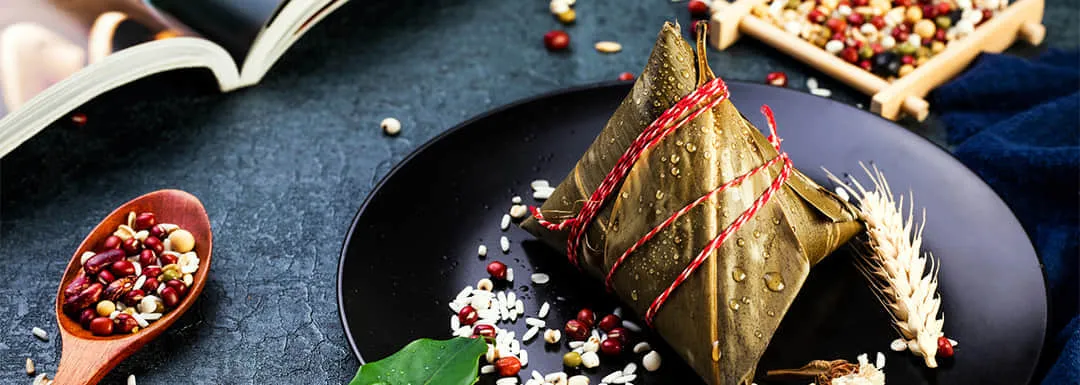
In China there are a number of festivals and special occasions where particular foods are indulged in, and each one has history and legends behind it. The significant foods to prepare and consume for each of these are related to the traditional story, or are made special simply because two words sound very similar.
Chinese New Year
The ‘Lunar New Year’ or Chinese New Year is celebrated all over the world nowadays, and there are some regional variations in the special foods. These are some of the local favorites.
1. Dumplings
 Dumplings
Dumplings
Of course dumplings are popular everywhere all of the time, but especially during the New Year celebrations, and especially in northern China. The name ‘jiaozi’ sounds like a word that means ‘bidding farewell to the old and ushering in the new’, and so dumplings are always made before midnight on New Years’ Eve and eaten during the last hour of the old year and the first hour of the Lunar New Year. The shape of ‘jiaozi’ resembles that of ancient gold and silver ingots or a crescent moon, and symbolizes the hope for a year of plenty. Some people like to wrap a one-yuan, fifty-cent or ten-cent coin in some of the dumplings, as a token of good fortune for those who eat them. This is said to ensure good luck and prosperity in the New Year.
Dumplings are meant to bring peace to families which may be in discord, and certainly the communal gathering to make the dumplings can do that as some people roll the skins, others make the stuffing, and others add the finishing touches. After they are stuffed with minced pork and chives or cabbage they can be steamed or fried, and then dipped in a variety or sauces as they are consumed.
2. Glutinous Rice Cakes – niangao
The pronunciation of the Chinese word ‘niangao’, or rice cake, sounds like a word meaning a higher level of life, which is a good enough reason for the rice-growing people of southern China to use this popular sweet food to celebrate the New Year. Guests will greet each other with “nian nian gao sheng” which basically means, “I hope each year will be better than the last!”
Niangao is made from glutinous rice powder and can be fried, steamed, stir-fried or boiled, resulting in a sweet, sticky, brown cake in the shape of a rectangle which can be eaten hot or cold, and is often given as a gift.
3. Eight Treasures Rice
Another sweet and sticky dessert, this popular Chinese New Year fare features a mixture of glutinous rice, nuts and fruits all cooked together. According to the relevant story, a thousand years ago this dessert was created to celebrate eight legendary warriors who defeated a tyrant. Another story about its origin is about a starving general on the run, who sustained himself throughout the winter by cooking up eight pilfered ingredients from nearby villages.
4. Lion’s Head Meatball
 Lion’s Head Meatball
Lion’s Head Meatball
A less common delicacy is Lion’s Head Meatball with Shanghainese Bok Choy. Because the lion is such a revered animal in Chinese culture, this popular Chinese New Year dish was created in the beast’s likeness. In actuality, this lion head is really just delicious pork meatballs with a bok choy mane.
5. Longan and Lychee
Eating fresh fruit at the New Year suggests a new start. Presenting Chinese longan (which in Chinese means ‘dragon’s eye’) as well as the beautiful lychee together in a fruit bowl make an attractive table adornment as well as a refreshing post-meal palate cleanser. They are also eaten for superstitious reasons, referencing family abundance and togetherness.
6. Persimmons
Less commonly available outside of China, this vibrant orange fruit may look similar to a tomato, but its custardy sweetness and soft flesh (tender enough to eat with a spoon!) makes fans of many first-time tasters. Often sold in boxes of 10 or more, this golden fruit, another prosperity-promising New Year’s food, makes a thoughtful host gift.
7. Peaches
Peaches actually originated in northwestern China, and during Chinese New Year, are enjoyed in abundance, as the fruit symbolizes longevity, wealth, abundance, and good fortune through the generations.
8. Mandarins, Pomelos, Oranges and Tangerines
 Oranges In Spring Festival
Oranges In Spring Festival
The gold-colored skins of citrus fruit symbolize prosperity and good luck, and the Chinese words for ‘tangerine’ and ‘gold’ sound almost the same. A mixture of these fruits often serve as an attractive centerpiece, as well as a wonderful after-dinner treat.
9. Fish
Fish, usually of a local variety, is an important item on the dining table of thousands of families on the eve of the Chinese New Year. Fish is pronounced 'yu' in Chinese, with the implications of having more than just a basic need each year. In southern China, some people just eat the middle part of the fish on the New Year Eve, leaving the head and tail to the next day to symbolize completeness. When the fish is placed on the dining table, its head must point to the elders, as a sign of respect.
Mid-Autumn Festival
Moon Cakes
 Moon Cake
Moon Cake
Offering sacrifices to the moon, eating moon cakes and watching the moon are the main activities on Mid-Autumn Day. Moon cakes are usually round-shaped, representing family reunion and bright life. They are traditionally Chinese pastries which consist of a thin tender skin enveloping a sweet, dense filling. They are made with a sweet bean-paste filling, and a golden brown flaky skin, and nowadays, mooncakes with modern flavors such as ice cream mooncakes and chocolate mooncakes have appeared.
Lantern Festival
Rice Dumpling – Yuanxiao
The tradition of eating the rice dumplings, or ‘yuanxiao’, for the Lantern Festival started during the Song Dynasty (960 – 1279). 'Yuanxiao’ is a kind of rice dumpling made of glutinous rice powder and wrapped with various fillings like bean paste, brown sugar and all kinds of fruits and nuts. People eat these on the last day of the Chinese New Year celebration, and they are also called 'tangyuan' which sounds like 'tuanyuan' (reunion).
 Yuan Xiao
Yuan Xiao
Chongyang Festival
Chongyang Cake
The Chinese word for ‘cake’, ‘gao’, sounds like the Chinese word for ‘high’. Mountains are high, so eating cake can take the place of going mountain climbing. Climbing mountains is popular in China, with the implication of promoting to a higher position. In places where there are no available mountains, people eat cakes made of rice or bean powder to replace the experience. In the past, newly married daughters would go back home to spend the festival together with their parents, so the cakes were decorated with Chinese dates, millet, almond or peanuts, as this signifies the parent’s good wishes for their daughters to give birth to a child in the near future.
Dragon boat festival
Zongzi
These are pyramid-shaped dumplings made of glutinous rice and wrapped in bamboo or reed leaves and are usually sweet with added dates in northern China, but can also be savory and have a range of added ingredients such as meat, shrimp, bean paste, and nuts in southern China. They are designed to honor Qu Yuan, the pioneer poet of ancient China.
Laba Festival
Laba Porridge
Eating Laba Porridge, also named 'Eight Porridge', is the focal point of the celebration on the Laba Festival. It is called babao (Eight Treasures) porridge for its high nutritional value. On this day Chinese folk cook the porridge specially to offer sacrifices to the divinities and ancestors to pray for bountiful harvests and auspicious events in the coming year. Essentially Laba porridge contains glutinous rice, red beans, millet, Chinese sorghum, peas, dried lotus seeds, and red beans, as well as other ingredients, such as dried dates, chestnut meat, walnut meat, almonds, and peanuts. The eight main ingredients are cooked with sugar to make the porridge tasty.

OR
Are you eager to begin your Chinese cultural journey?
Drop us a line and we will promptly connect you with our leading China expert!
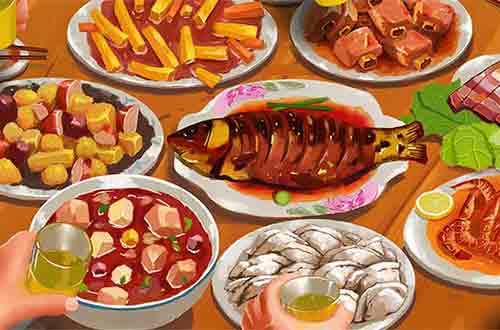 Reunion Dinner: Nian Ye Fan
Reunion Dinner: Nian Ye Fan 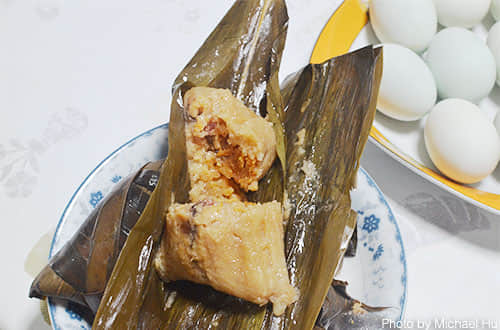 What is Zongzi?
What is Zongzi? 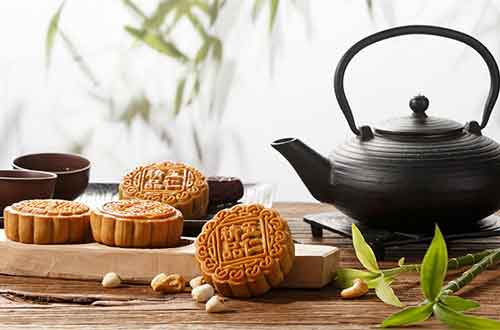 What is a Mooncake?
What is a Mooncake? 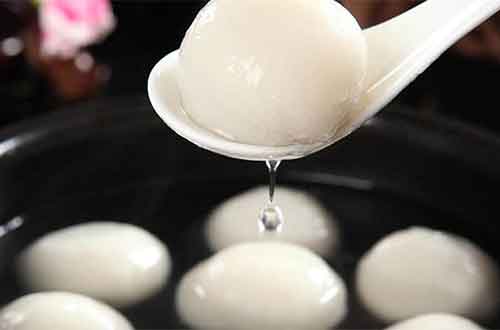 Differences between Yuanxiao and Tangyuan
Differences between Yuanxiao and Tangyuan